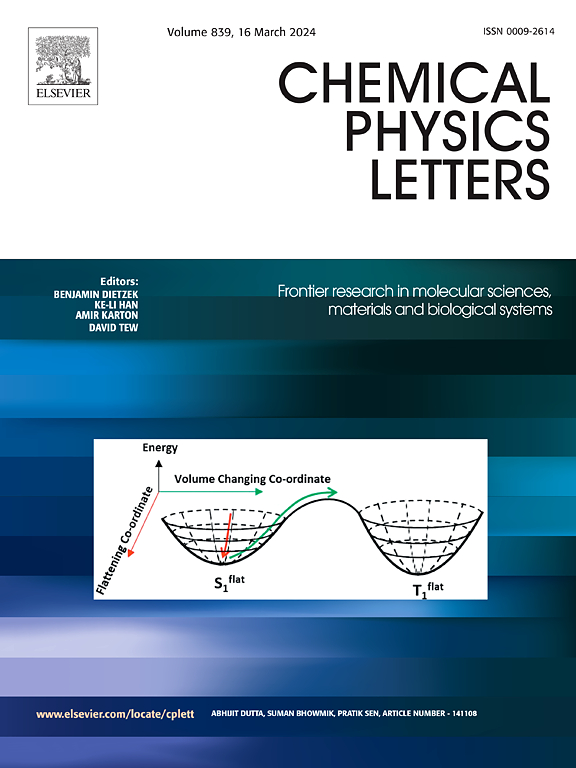染料设计和筛选的更快计算框架:实现更高电离能的目标
IF 2.8
3区 化学
Q3 CHEMISTRY, PHYSICAL
引用次数: 0
摘要
本研究介绍了一个使用机器学习(ML)进行染料设计的高级框架。ML模型被训练用来预测染料的电离能。利用逆合成有趣化学亚结构(BRICS)技术,生成了10k种新染料。然后,预先训练的ML模型预测这些染料的电离能值。选择过程优先考虑具有较高电离能的染料。对所选染料的合成可及性和结构相似性进行了评价,发现它们之间存在显著的差异。这种方法有效地识别和优化了新的染料,极大地提高了为各种应用寻找优质材料的潜力。本文章由计算机程序翻译,如有差异,请以英文原文为准。

A faster computational frame work for dye design and screening: A goal to achieve higher ionization energy
This study introduces an advanced framework that use machine learning (ML) for dye design. ML models are trained to predict the ionization energy of dyes. Using the Breaking Retrosynthetically Interesting Chemical Substructures (BRICS) technique, 10 k new dyes are generated. The pre-trained ML model then forecasts the ionization energy values of these dyes. The selection process prioritizes dyes with higher ionization energy. The chosen dyes are evaluated for synthetic accessibility and structural similarity, revealing significant diversity among them. This approach efficiently identifies and optimizes new dyes, greatly enhancing the potential for finding superior materials for various applications.
求助全文
通过发布文献求助,成功后即可免费获取论文全文。
去求助
来源期刊

Chemical Physics Letters
化学-物理:原子、分子和化学物理
CiteScore
5.70
自引率
3.60%
发文量
798
审稿时长
33 days
期刊介绍:
Chemical Physics Letters has an open access mirror journal, Chemical Physics Letters: X, sharing the same aims and scope, editorial team, submission system and rigorous peer review.
Chemical Physics Letters publishes brief reports on molecules, interfaces, condensed phases, nanomaterials and nanostructures, polymers, biomolecular systems, and energy conversion and storage.
Criteria for publication are quality, urgency and impact. Further, experimental results reported in the journal have direct relevance for theory, and theoretical developments or non-routine computations relate directly to experiment. Manuscripts must satisfy these criteria and should not be minor extensions of previous work.
 求助内容:
求助内容: 应助结果提醒方式:
应助结果提醒方式:


